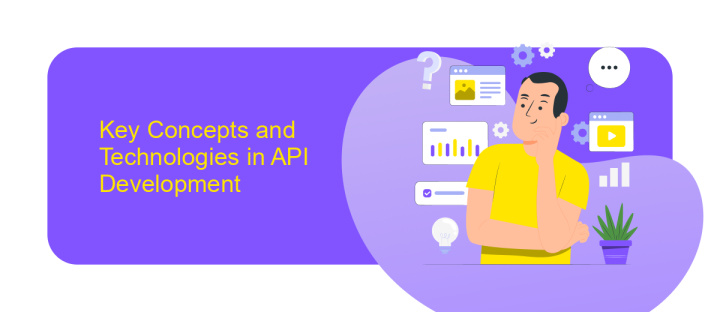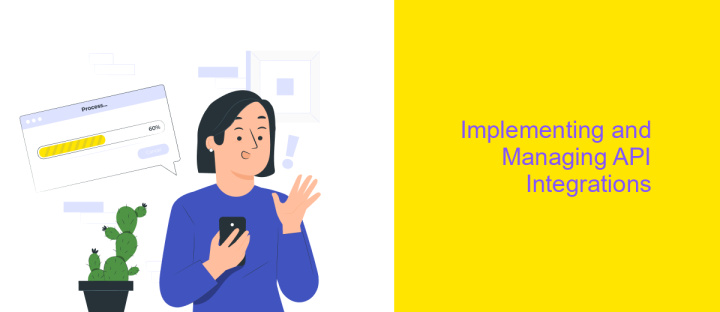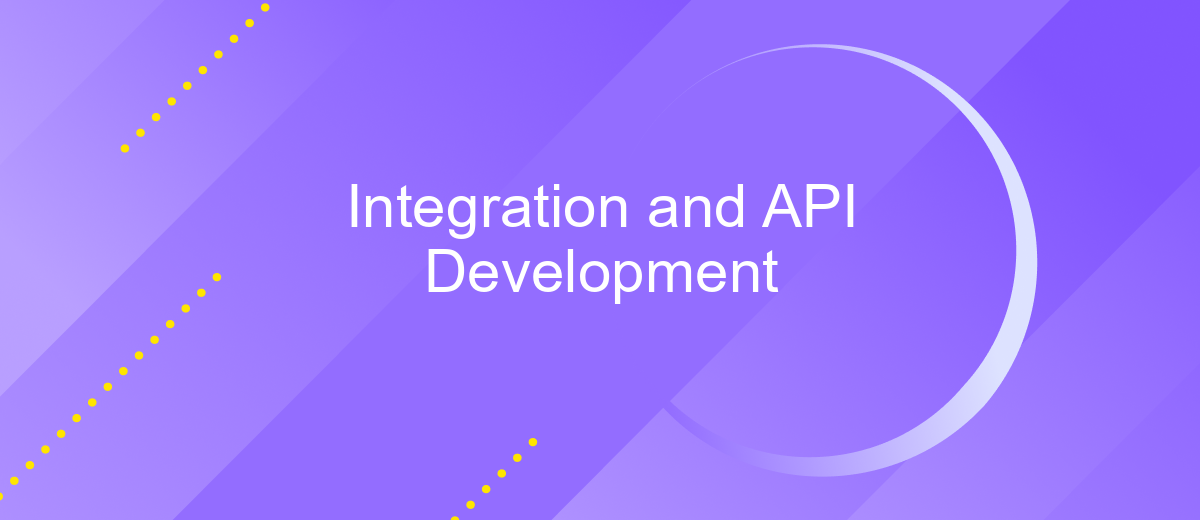Integration and API Development
In today's rapidly evolving digital landscape, Integration and API Development have become pivotal for businesses striving to enhance connectivity and streamline operations. By enabling seamless communication between diverse software systems, APIs facilitate the exchange of data and functionality, driving innovation and efficiency. This article explores the fundamentals of API development, best practices for integration, and the transformative impact these technologies have on modern enterprises.
Understanding API Integration and its Importance
API integration plays a pivotal role in modern software development, enabling seamless communication between different systems and applications. By allowing disparate software components to interact, APIs facilitate data exchange and functionality sharing, enhancing overall system efficiency. This integration is crucial for businesses looking to streamline operations, improve user experiences, and foster innovation.
- Enhances interoperability between diverse systems and platforms.
- Facilitates automation, reducing manual intervention and errors.
- Enables scalability by allowing systems to expand and adapt easily.
- Supports real-time data sharing, improving decision-making processes.
- Promotes innovation by allowing developers to leverage existing functionalities.
Understanding the importance of API integration is essential for organizations aiming to stay competitive in a digital landscape. By leveraging APIs, companies can rapidly deploy new features, integrate third-party services, and maintain agility in response to market demands. As technology continues to evolve, the strategic implementation of API integration will remain a cornerstone of successful digital transformation efforts.
Key Concepts and Technologies in API Development

API development is a crucial aspect of modern software engineering, enabling seamless communication between different software systems. At its core, it involves creating a set of rules and protocols for accessing the features or data of an application. Key concepts include RESTful APIs, which use HTTP requests to GET, POST, PUT, and DELETE data, and SOAP APIs, which rely on XML-based messaging protocols. Understanding these protocols is essential for developers to ensure efficient and secure data exchange between systems.
Technologies like JSON and XML are fundamental in API development, serving as data interchange formats. JSON is favored for its lightweight and easy-to-read structure, while XML is used for its robustness and extensibility. Tools like ApiX-Drive facilitate API integration by offering a platform to connect various applications without extensive coding. This service simplifies the integration process, allowing businesses to automate workflows and enhance productivity. By leveraging such technologies, developers can create scalable and efficient APIs that meet the dynamic needs of users and applications.
API Design and Development Best Practices

In the realm of API development, adhering to best practices is crucial for creating efficient, reliable, and scalable interfaces. A well-designed API not only enhances user experience but also ensures seamless integration with various systems and applications. By following established guidelines, developers can avoid common pitfalls and deliver robust APIs.
- Consistency is key: Use consistent naming conventions and data structures to make your API intuitive and easy to understand.
- Versioning: Implement versioning to manage changes without disrupting existing users. This allows for backward compatibility and smoother transitions.
- Security: Prioritize security by implementing authentication and authorization mechanisms, such as OAuth, and always use HTTPS to encrypt data.
- Documentation: Provide comprehensive and clear documentation to help developers understand how to use your API effectively.
- Performance: Optimize for performance by minimizing response times and ensuring efficient use of resources.
By incorporating these best practices, developers can create APIs that are not only functional but also future-proof. A focus on consistency, security, and thorough documentation will facilitate easier integration and foster a positive developer experience, ensuring the API's success and longevity.
Implementing and Managing API Integrations

Implementing API integrations involves connecting different software systems to enable seamless communication and data exchange. The process begins with understanding the requirements and capabilities of the APIs involved. Developers must ensure that the chosen APIs align with the business objectives and technical constraints of the project.
Once the APIs are selected, the next step is to establish secure and efficient connections. This often involves setting up authentication protocols, such as OAuth or API keys, to protect sensitive data. Proper error handling and logging mechanisms are also crucial to identify and resolve issues promptly, ensuring the integration remains robust over time.
- Define clear objectives and requirements for the integration.
- Select APIs that align with your technical and business needs.
- Implement authentication and authorization protocols.
- Set up error handling and logging for monitoring and troubleshooting.
- Regularly test and update integrations to maintain compatibility.
Managing API integrations requires ongoing monitoring and maintenance. This includes regularly testing the connections to ensure they are functioning correctly and updating the integrations as APIs evolve. By prioritizing security and scalability, businesses can leverage API integrations to enhance their digital ecosystems, improve efficiency, and drive innovation.
- Automate the work of an online store or landing
- Empower through integration
- Don't spend money on programmers and integrators
- Save time by automating routine tasks
Security and Performance Considerations in API Development
Ensuring security in API development is paramount, as vulnerabilities can lead to data breaches and unauthorized access. Implementing authentication protocols such as OAuth 2.0 and using API keys are fundamental steps in securing APIs. Additionally, data encryption both in transit and at rest is essential to protect sensitive information. Regular security audits and testing, including penetration testing, can help identify potential weaknesses. Employing rate limiting and throttling can also prevent abuse of the API and protect against denial-of-service attacks.
Performance considerations are equally important, as they directly impact user experience. Optimizing API response times can be achieved by implementing caching strategies and minimizing payload sizes. Efficient database queries and using content delivery networks (CDNs) can further enhance performance. Services like ApiX-Drive can streamline integration processes, reducing latency and improving overall API efficiency. Monitoring tools should be employed to track API performance metrics, allowing for timely identification and resolution of bottlenecks. By balancing security and performance, developers can create robust and reliable APIs that meet user needs.
FAQ
What is API integration and why is it important?
How do I choose the right API for my project?
What are some common challenges in API development?
How can I ensure the security of my API?
What tools can help with automating API integrations?
Apix-Drive is a universal tool that will quickly streamline any workflow, freeing you from routine and possible financial losses. Try ApiX-Drive in action and see how useful it is for you personally. In the meantime, when you are setting up connections between systems, think about where you are investing your free time, because now you will have much more of it.


